They experiment with all available media, technologies, electronics and they mix them all together, creating new tools of expression and communication. They treat the art of new media as a laboratory for the future. They arrange unusual technological situations and by this means test the boundaries of people’s perception.
DODECAUDION
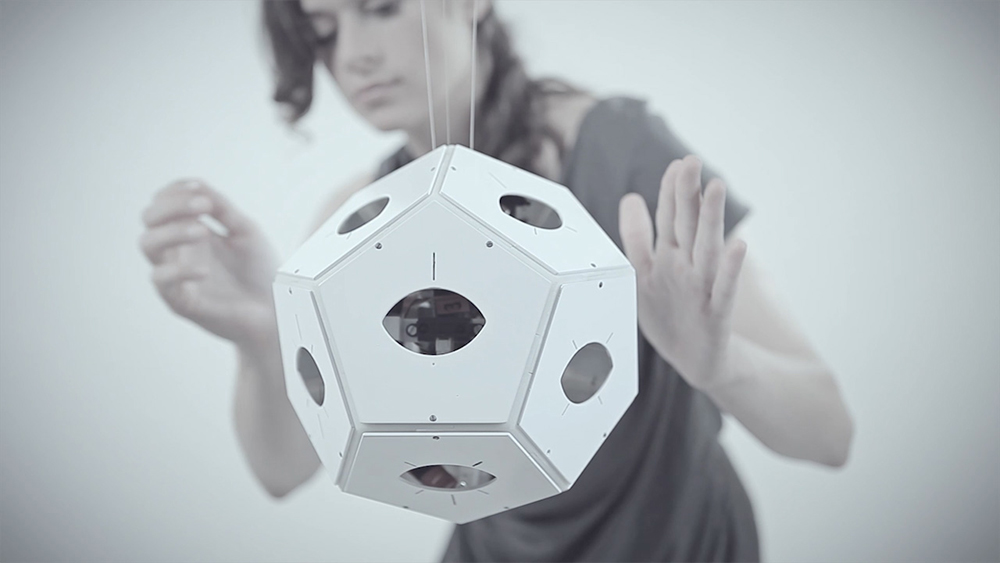 Dodecaudion, photo: courtesy of panGenerator group
Dodecaudion, photo: courtesy of panGenerator groupDodecaudion is a music controller – a device which allows the transposition of body motion into sound. For panGenerator, the starting point was the diminishing expression of the present day music performer, a result of the use of laptops and electronics which demand great precision to be controlled. Their idea was to invert this dependency and investigate into how body motion can itself create music.
The shape of the body of Dodecaudion is based on a dodecahedron. Its skeleton was f 3D-printed and each of its aluminium walls is equipped with a distance sensor, which allows for independent measurement of the distance from each hand. The controller is linked to a computer via Bluetooth and sends commands to software chosen by the user. In a result, dance is translated directly into music simultaneously and they become inseparably merged.
MACROFILM
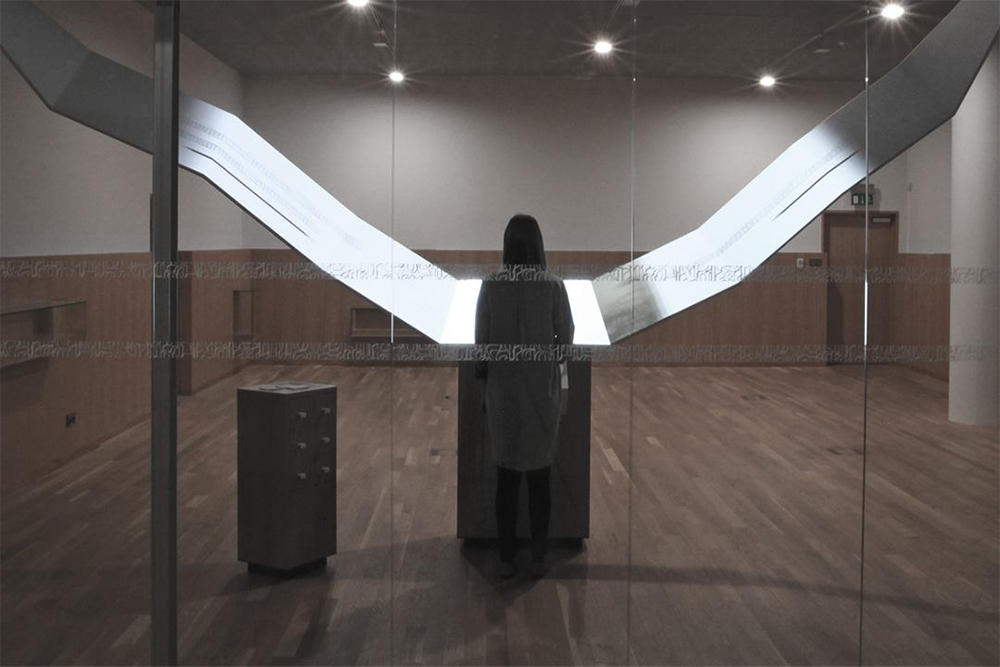 Macrofilm, photo: courtesy of panGenerator group
Macrofilm, photo: courtesy of panGenerator groupThe Museum of the History of the Polish Jews asked the group to create an installation which would refer to the analogue experience of being in a traditional archive or library and at the same time would engage visitors using new media technology. panGenerator came up with a spatial form, consisting of a composite, 8 metre-long ribbon which acts as a screen for displaying the projection. In the central point, a wooden desktop with a knob and a wooden card reader were placed. An old-fashioned locker is an additional part of the installation and is used for storing the aforementioned cards.
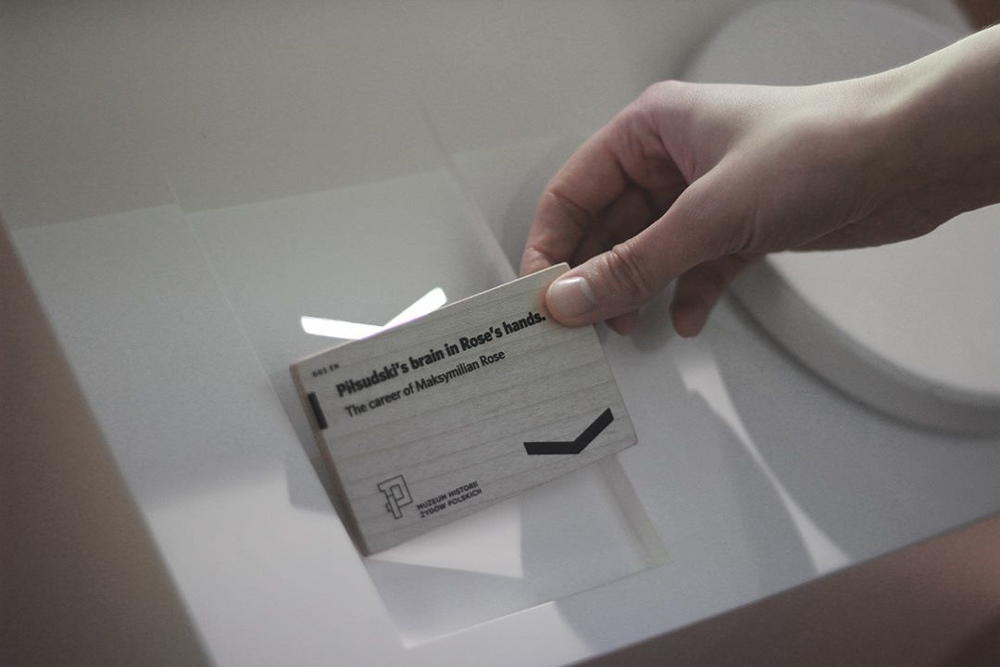 Macrofilm, photo: courtesy of panGenerator group
Macrofilm, photo: courtesy of panGenerator groupTACTILU
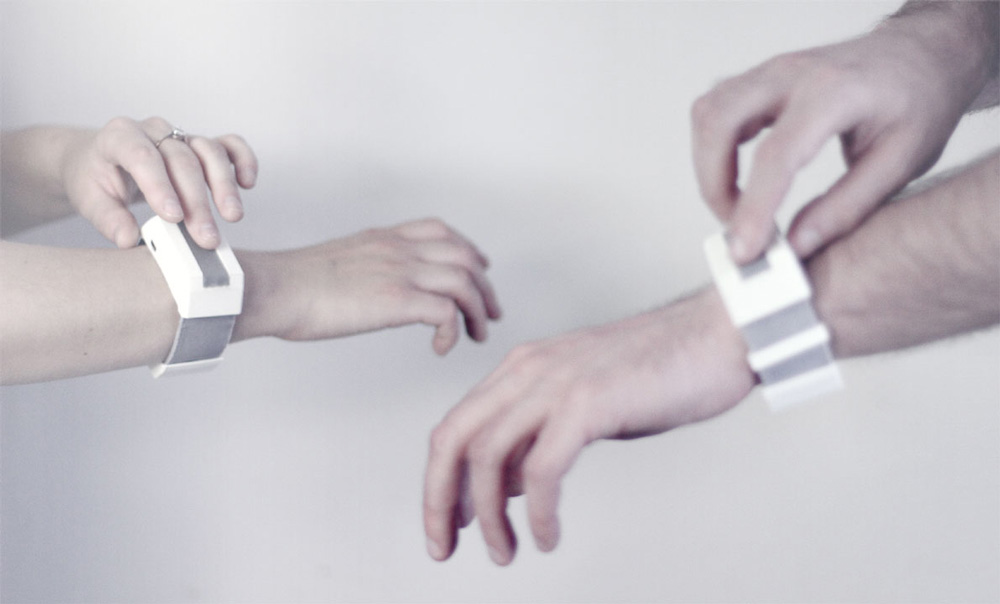 Tactilu, photo: courtesy of panGenerator group
Tactilu, photo: courtesy of panGenerator groupTactilu is a bracelet which allows long-distance sending of touch thanks to a wireless connection with a smart phone and the Internet. Tactilu subtly raises the subject of the domination of audio-visual forms of communication in the mass media. It can be also regarded as a prosthesis enabling physical interaction with another person. Like Homeless Vehicle Project by Krzysztof Wodiczko, it signalizes the subject matter of neglecting the sense of touch – an issue emerging in social processes which can’t be overcome with use of any technology. It is therefore an example of a critical design, which creates objects that could conceivably be regarded as commercial products but in fact aim at criticising people’s behaviours.
.FLOAT
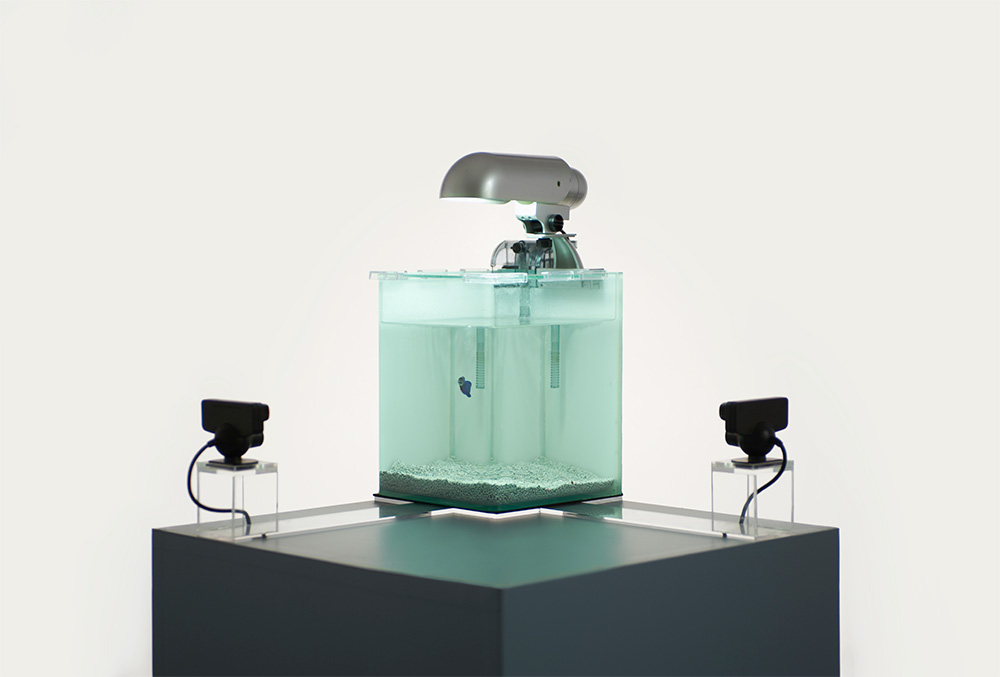 .float, photo: courtesy of panGenerator group
.float, photo: courtesy of panGenerator group.float is an installation which reflects the role of a creator in the process of creation. An animal’s motion (here an aquarium fish) is tracked live and becomes a source of data for generating a 3D sculpture. The project is regarded as a crossover experiment mixing the chaotic forces of nature with digitally-imposed order. The title -.float - refers not only to floating on the water's surface but is also a name for the set of floating point numbers used in programming, which were used here to register the position of the fish. The installation is an example of technology being able to expand our perception of beauty, revealing previously inaccessible layers of reality. It serves as a sort of interface between the ‘imperceptible’ and our senses.
Constellaction
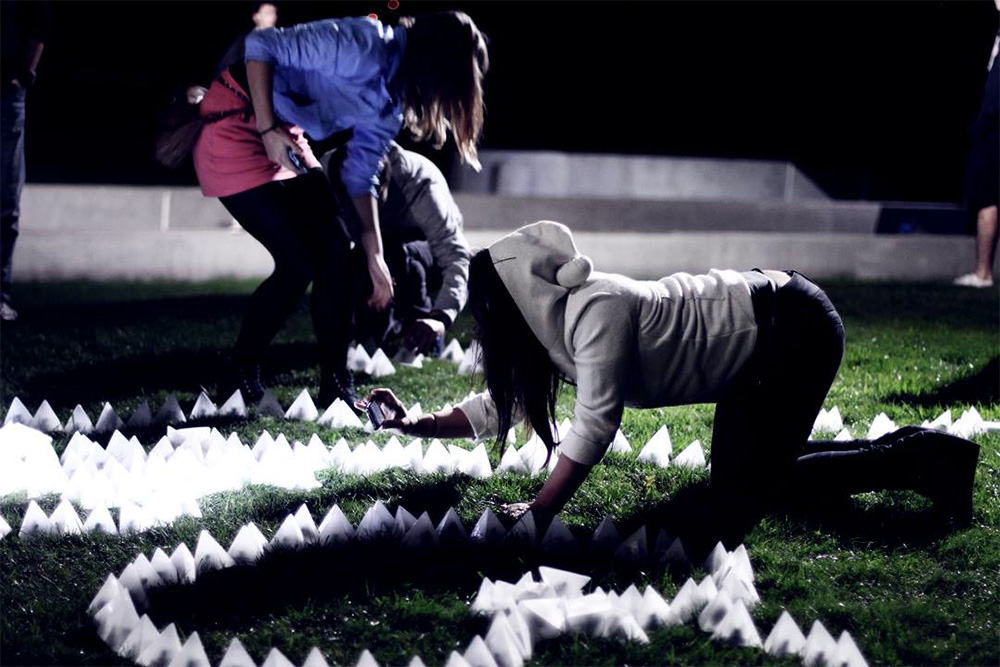 Konstelakcja, photo: courtesy of panGenerator group
Konstelakcja, photo: courtesy of panGenerator groupConstellaction (a portmanteau of constellation and action) is a project based on the phenomenon of emergence, created for Festiwal Przemiany 2013 (The Change Festival), organised by the Copernicus Science Centre. According to the definition, an emergent system is a system composed of a large number of simple elements, which becomes much more complicated than the sum of its parts thanks to their interactions. It seems to be controlled top-down but in fact there is no control at all.
A regular tetrahedron made out of a vacuum-formed material is the basic module of Constellation. Inside each of them is a light receptor, a diode and a simple microcontroller. When one module detects a sudden change in illumination it blazes and emits a sound with a short delay. Thanks to these simple behavioural rules the modules can transfer a light impulse from one to another in a sort of domino effect. The interaction, however, has two dimensions - a simple interaction between the modules, and the interaction between the modules and the audience who spatially arrange any system components.
Non - video Game
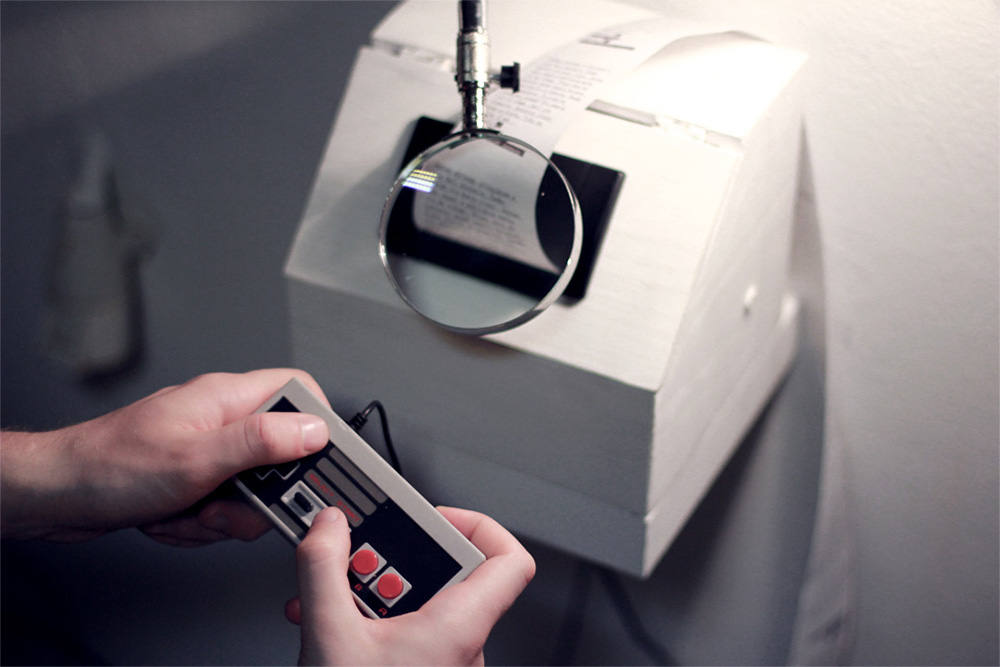 Non-video Game photo: courtesy of panGenerator group
Non-video Game photo: courtesy of panGenerator groupThe Non-video Game was created on commission from National Audiovisual Institute in 2011. This time panGenerator wanted to check if a simple text narrative is able to engage ‘players’ as much as visually complex video games. For this, purpose they combined the iconic interface of a classic Nintendo controller with a thermal printer (used, for example, for printing receipts in shops). The content of the game was based on a novel by Łukasz Orbitowski entitled Tylko Maks. Historia z dreszczykiem (Only Maks. A Thrilling Story). The player–reader could choose different paths of narration, built in a non-linear way, and then compare their outcome with other users.